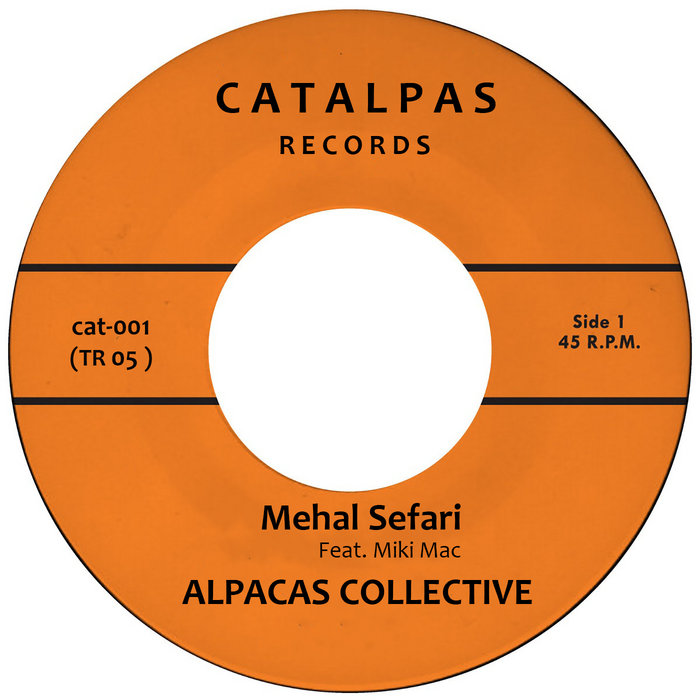
Mehal Sefari (single) – Alpacas Collective feat Miki Mac
this blog is GROOVY – check out great Soul, Funk, Jazz, Hip Hop, Bass, Breaks , Reggae, House n many more TUNES
Ah, the Farfisa organ! That funky little keyboard that took the music scene by storm. Step back in time with me as we dive into the vibrant history of this badass instrument that has tickled fingers and ignited dance floors since its inception.
The story begins in 1962 when an Italian company named Farfisa (short for “Farfisa Electronic Instruments”) brought this electric organ to life. Initially designed to be a portable alternative to traditional organs, it quickly found its groove among rock bands, pop groups, and even some jazz musicians. With its lightweight design and catchy sound, it was like the cool cousin of piano keyboards—easy to take anywhere.
What made the Farfisa stand out? Well, let’s break it down:
Tone Generation: Using a combination of oscillators and filters, each note produced a warm yet punchy sound that became synonymous with 60s garage rock.
Portability: Musicians were often on the go; lugging around heavy pianos wasn’t exactly practical! The Farfisa’s compact size meant more room in vans for groupies… I mean gear!
Variety of Sounds: It came loaded with various presets allowing artists to experiment with different sounds—from sweet flute tones perfect for ballads to zesty brass sounds that cranked up the party vibe.
As rock ‘n’ roll spilled over into mainstream culture during the late 60s and early 70s, enterprising musicians began snapping up these electronic beauties left and right! Bands like The Doors used them extensively—think “Light My Fire.” And who could forget about The Kingsmen? Their classic hit “Louie Louie” got a serious boost from those infectious Farfisa riffs.
Oh! And let’s not overlook how psychedelic bands embraced this instrument too! Groups such as Iron & Wine and Moby Grape brought forth dreamy melodies that had listeners floating away into another world—right before they served ’em up cocktails at their next big gig!
In Britain during this groovy era, mods were all about style—and what better way to impress than tootling on your snazzy new Farfisa?! Legends say there was fierce competition among mod bands over who could score one first; apparently there were even clandestine meetings where players would exchange tips on how best to wield one at parties!
Fast forward through shifts in musical styles across decades—the disco craze hit hard in the late ‘70s and guess who turned out ready-to-dance hits? Yep—you guessed right—the trusty ol’ Farfisa organ still set trends while inspiring new acts popping onto stages everywhere! Artists like Stevie Wonder, although he mostly played clavinet (another groovy keyboard), incorporated elements reminiscent of our beloved friend here.
Disco didn’t just revamp dance moves—it also birthed unique cult followings around synth-heavy funk bands like Chic whose infectious rhythms ruled dance floors worldwide until sunrise!
Now let’s get real—with every group comes peculiar quirks or characters behind closed doors (and backstage). One band member noted how they always sacrificed a pair of socks before stepping onto stage claiming it appeased “the spirit within” their vintage equipment so things wouldn’t short-circuit mid-set… We can probably agree everyone had fun but wondered if ghosts preferred cotton over polyester?
As time marched on beyond disco balls twirling above us (thank you very much), technology ushered synthesizers into dominating popular charts—but never count out our hero! In recent years we’ve seen millennials hopping aboard train cars full steam ahead toward rekindling interest via retro vibes combined with fresh beats spinning nostalgic records featuring none other than…the iconic blue buttoned masterpiece created by crafty Italians long ago!
Today artists keep alive classic sounds by fusing contemporary genres leaving listeners wondering what happened while dancing maybe even busting a few ‘dad moves’ along steps leading right back towards good old-fashioned grooves—all thanks once again; yes folks—you guessed it—the legendary FARFISA ORGAN!!
Picture live concerts gone wild—a few scattered fans throwing packed sandwiches instead flowers or sweating profusely underneath those concert lights chanting for encores…while tech-savvy roadies scramble behind amps adjusting settings frantic-like hoping nobody notices something weird occurring harmonically causing flubs mid-show resulting sometimes hilarious outcomes making audiences laugh aloud together rather annoyed momentarily at bandmates fumbling keys amidst rhythmic chaos surrounding them…
So there you have it—the funky journey through history wrapped around one incredible instrument known as far-funk-a-licious-FARFISA ORGAN!! From mod scenes shaking England’s heart beating loud underfoot twinkling stars down London streets paved solidly beneath legends born anew taking flight flying high then settling softly upon modern-day nostalgia finds fumbling joyous bursts triggering unexpected hilarity illuminating smiles spreading everywhere echoing memories reflecting colors celebrating freedom expression forever bound inside soulful sonorous notes emanating forth from sleek dashboards enveloping eclectic mixes purely serving joy unrestrained remains unchanged since day one—a testament worth celebrating wholeheartedly—even decades later!!!
And remember folks—next time you hear those rich chords waft through airwaves don’t hesitate rocking shoes hitting floor just enjoy close your eyes allow yourself drift wherever far-funk flows take ya!’ 🎹✨

Mehal Sefari (single) – Alpacas Collective feat Miki Mac